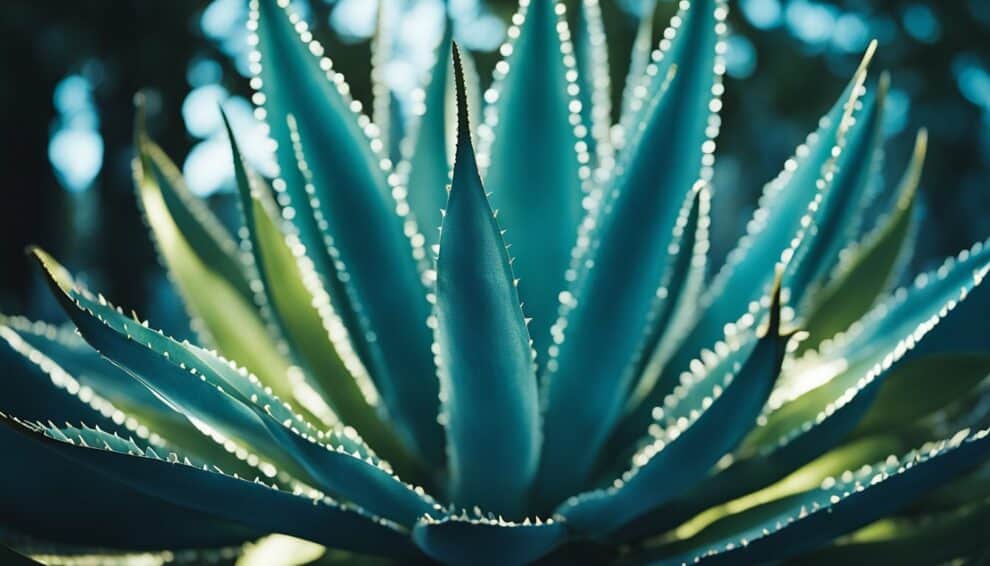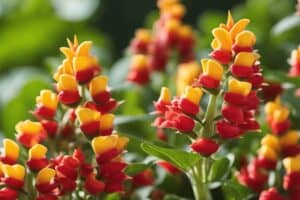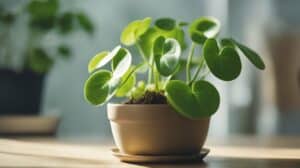Blue Glow Agave (Agave ‘Blue Glow’) is a stunning succulent plant that is native to Mexico and is widely popular in landscaping and gardening. This plant is known for its striking blue-green leaves that form a rosette shape, making it a popular choice for adding texture and color to any garden. The Blue Glow Agave is a relatively low-maintenance plant that can grow up to three feet tall and four feet wide, making it a great choice for both indoor and outdoor spaces.

Propagating Blue Glow Agave can be a rewarding experience for any gardener. This process involves taking cuttings from a mature plant and using them to grow new plants. Propagation is a great way to expand your garden or share your love of this beautiful plant with others. With the right tools and techniques, anyone can successfully propagate Blue Glow Agave and enjoy the beauty of this plant for years to come. In this article, we will provide a step-by-step guide to propagating Blue Glow Agave, including the best time to propagate, the tools needed, and the proper care and maintenance of the new plants.
Understanding Agave ‘Blue Glow’
Botanical Profile
Agave ‘Blue Glow’ is a stunning succulent that belongs to the Agave family. It is a hybrid plant that was created by crossing Agave attenuata and Agave ocahui. The plant is known for its striking blue-green leaves that form a rosette shape. The leaves are thick and fleshy, and they have a smooth surface with no spines or thorns.
Agave ‘Blue Glow’ is a slow-growing plant that can reach a height of 2 to 3 feet and a width of 3 to 4 feet. The plant produces offsets or “pups” that grow from the base of the mother plant. These pups can be removed and propagated to create new plants.
Growth Characteristics
Agave ‘Blue Glow’ is a hardy plant that can tolerate a wide range of temperatures and soil conditions. It prefers well-draining soil and full sun to partial shade. The plant is drought-tolerant and can survive long periods without water.
When grown in the right conditions, Agave ‘Blue Glow’ can produce a tall flower spike that can reach up to 10 feet in height. The spike is covered in yellow flowers that bloom in the summer months.
Propagation of Agave ‘Blue Glow’ can be done by removing the offsets or pups that grow from the base of the mother plant. The pups should be removed when they are about one-third the size of the mother plant and should be planted in well-draining soil. It is important to let the cuttings dry for a few days before planting to prevent rotting.
Overall, Agave ‘Blue Glow’ is a beautiful and low-maintenance plant that can add a touch of sculptural splendor to any garden or landscape.
Propagation Basics

Best Time to Propagate
The best time to propagate Blue Glow Agave is during the spring season when the plant is actively growing. This is the time when the plant has the most energy to put into root development and will result in a higher success rate. It is not recommended to propagate during the winter season as the plant is dormant and will not have the energy to support new growth.
Required Tools and Materials
To propagate Blue Glow Agave, you will need the following tools and materials:
- Sharp, clean pruning shears
- A clean, well-draining potting mix
- A container for rooting, such as a small pot or seedling tray
- Rooting hormone (optional)
Before starting, make sure your tools and materials are clean and free of any debris or contaminants. This will help prevent the spread of disease and ensure the health of your new plant. It is also recommended to wear gloves when handling the plant as the leaves can be sharp and prickly.
Once you have gathered your supplies, it’s time to begin the propagation process.
Propagation Methods

Blue Glow agave can be propagated through various methods, including offsets division, seed germination, and cuttings. Each method has its own advantages and disadvantages, and the choice of method depends on the grower’s preference and the availability of resources.
Offsets Division
Offsets division is the most common and easiest method of propagating Blue Glow agave. The plant produces offsets, or “pups,” at the base of the mother plant, which can be separated and replanted. To propagate through offsets division, follow these steps:
- Wait until the offsets are at least one-third the size of the mother plant before separating them.
- Use a sharp, sterile knife to cut the offset from the mother plant, making sure to include some of the root system.
- Let the cuttings dry for a few days before planting them in well-draining soil.
Seed Germination
Seed germination is a more challenging method of propagating Blue Glow agave, but it allows for more genetic diversity. To propagate through seed germination, follow these steps:
- Collect the seeds from a mature Blue Glow agave plant.
- Soak the seeds in water for 24 hours to soften the seed coat.
- Plant the seeds in a well-draining soil mix and keep the soil moist but not waterlogged.
- Place the pot in a warm, bright location, but out of direct sunlight.
- Germination can take several weeks to several months.
Cuttings
Propagation through cuttings is a less common method but can be successful with proper care. To propagate through cuttings, follow these steps:
- Use a sharp, sterile knife to cut a stem from the mother plant, making sure to include a few leaves and a portion of the root system.
- Let the cutting dry for a few days before planting it in well-draining soil.
- Keep the soil moist but not waterlogged and place the pot in a warm, bright location, but out of direct sunlight.
- Rooting can take several weeks to several months.
By using these propagation methods, growers can easily propagate Blue Glow agave and expand their collection.
Post-Propagation Care

After propagating Blue Glow Agave successfully, it is important to ensure that the plants are given proper care to ensure their healthy growth. Here are some tips on post-propagation care:
Watering and Feeding
Blue Glow Agave plants require well-draining soil and should be watered sparingly. Overwatering can lead to root rot, which can be fatal for the plant. It is recommended to water the plant only when the soil is completely dry. During the summer months, when the plant is actively growing, it may require more frequent watering.
Fertilizing the plant once a year during the spring season can help to promote healthy growth. A slow-release fertilizer with a balanced N-P-K ratio is recommended for Blue Glow Agave plants.
Sunlight and Placement
Blue Glow Agave plants require full sun to partial shade for optimal growth. They should be placed in a location with plenty of sunlight and good air circulation. It is important to ensure that the plant is not exposed to extreme temperatures or frost, as it can damage the plant.
Common Pests and Diseases
Blue Glow Agave plants are generally resistant to pests and diseases. However, they may be susceptible to mealybugs, spider mites, and scale insects. Regular inspection of the plant can help to identify any pest infestations early on. In case of an infestation, it is recommended to use a natural insecticide or to wipe the affected area with a cotton swab dipped in rubbing alcohol.
In terms of diseases, Blue Glow Agave plants may be susceptible to fungal infections, which can be caused by overwatering or poor drainage. To prevent fungal infections, it is important to ensure that the soil is well-draining and that the plant is not overwatered.
Frequently Asked Questions

How can I propagate Blue Glow Agave from cuttings?
Blue Glow Agave can be propagated from stem cuttings. It is best to take cuttings from mature plants in the spring or summer when the plant is actively growing. Cut a stem from the parent plant, leaving a few leaves at the top, and let it dry for a few days. Once the cut end has dried, plant the cutting in well-draining soil and water it sparingly until new growth appears.
What are the steps to remove and replant pups from a Blue Glow Agave?
To remove and replant pups from a Blue Glow Agave, wait until they are at least one-third the size of the parent plant. Gently dig around the base of the pup to expose its roots, then carefully separate it from the parent plant. Plant the pup in well-draining soil and water it sparingly until new growth appears.
Does the Blue Glow Agave produce flowers, and if so, what do they look like?
Yes, the Blue Glow Agave produces flowers. The flowers are yellow and appear on a tall stalk that can reach up to 20 feet in height. The plant typically blooms in the late spring or early summer.
At what rate does a Blue Glow Agave grow, and how big can it get?
Blue Glow Agave is a slow-growing plant that typically grows one to two feet per year. It can reach a height of three to four feet and a width of four to five feet.
Can you grow a Blue Glow Agave from bulbils, and how is it done?
Yes, you can grow a Blue Glow Agave from bulbils. Simply remove the bulbils from the parent plant and plant them in well-draining soil. Water the bulbils sparingly until new growth appears.
What is the general method for propagating agave plants?
The general method for propagating agave plants is by removing and replanting pups, taking stem cuttings, or planting bulbils. It is important to use well-draining soil and water sparingly until new growth appears.













